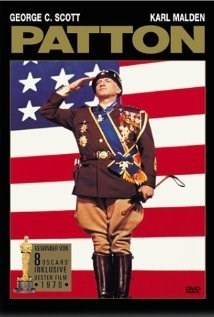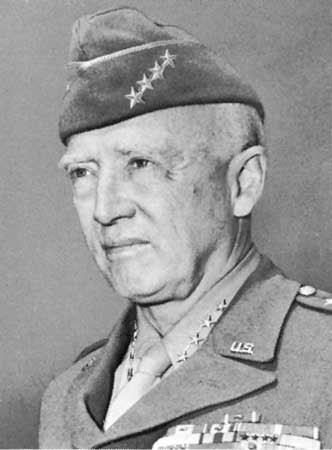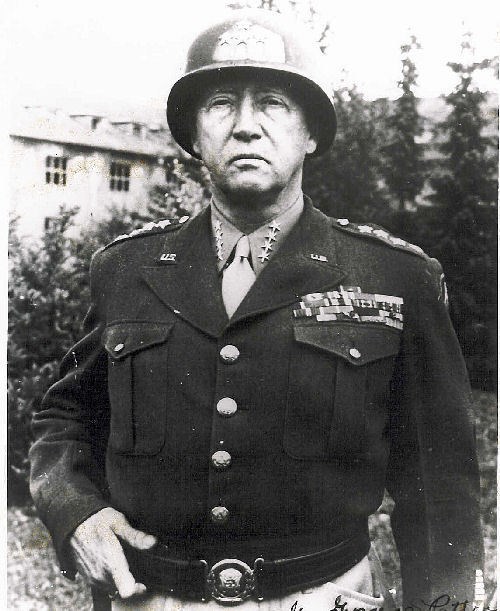|
GC3QZRH
 Patton (Classic Movies)
Patton (Classic Movies)Type: Mystery | Size: Regular  | Difficulty:
| Difficulty:  | Terrain:
| Terrain:  By: 3 Williams Kidz @ | Hide Date: 07/21/2012 | Status: Available Country: United States | State: Colorado Coordinates: N38° 47.391 W104° 51.077 | Last updated: 08/30/2019 | Fav points: 0 








All glory ... is fleeting. The cache is NOT at the above coordinates, but you may drive past there on your way to parking, which is available a few hundred feet from the cache. The terrain rating of 3 is accurate, if there is no snow or ice. While only several hundred feet from parking, it is STEEP. My 10 year old son and 7 year old boy-girl twins made the hike to GZ, but it was steep. NO CLIFFS OR DROPOFFS THOUGH. BE SURE TO WRITE DOWN THE LETTER CODE ON THE LID OF THE CONTAINER, AND IN THE FRONT OF THE LOGBOOK (SAME CODE) WHICH IS USED IN THE “CLASSIC MOVIES" FINAL CACHE which is linked below.  Welcome to the fifth Classic Movies cache by the 3 Williams Kidz geo-team. The idea is that you will have to watch the movie to get the answers to the questions below; there are one, maybe two exceptions, for trivia’s sake. Since the entire script is available – and easily “searchable” -- online, I have tried to come up with questions that you cannot answer by searching the Internet, so some of these questions are pretty obscure. Here are all the geocaches in the Classic Movies series: 1. Casablanca 2. The Great Escape 3. The Good, the Bad and the Ugly 4. Cool Hand Luke 5. Patton 6. Butch Cassidy and the Sundance Kid 7. The Godfather 8. High Noon 9. The Wizard of Oz 10. Gone With the Wind And the FINAL cache: Classic Movies FINAL cache If you are willing to watch one of Hollywood’s finest classic movies, get the TV and video player ready, maybe pop some popcorn, and have a pen and paper ready to answer the below questions, which are NOT IN THE ORDER they are presented in the film (just one part of the difficulty rating). And, be prepared for a 172 minute long film. The cache is located at North AB CD.EFG West HIJ KL.MNO Latitude: A: Before Patton (George C. Scott) speaks in the film, we see that he is wearing a ring with a colored gem in it, on his left pinky finger. If the gem is yellow, A=1. If the gem is blue, A=2. If the gem is red, A=3. If the gem is black, A=4. B: What is the name of the town in which Patton first shows us his dog, named after William the Conquerer? After the Pomeranian dog named Abigail frightens William, Patton decides to call him "Willie". If the town is York, B=7. If the town is Knutsford, B=8. If the town is Lexington, B=9. C: Patton is headed toward Bastogne (The Battle of the Bulge); weather is bad, so he tasks the chaplain with writing a weather prayer -- that works! Patton declares "Get me that Chaplain -- he stands in good with the Lord, and I want to decorate him!" Air cover then flies through the valley, and an armored personnel vehicle drives past, and a soldier on the APV says "Hiya General!" What is painted on the side of that APV? If “Ike is coming”, C=3. If “Home Alive in ‘45”, C=4. If “Kilroy was here”, C=5. D: The Germans have received word that Patton (who is now in Malta) may now face a court-martial; the senior German officer (Field Marshal Jodl) refuses to believe this, stating "Would they sacrifice their best commander because he slapped a soldier?" Then, the scene cuts to London, where there is a red structure on the right side of the screen. There is one word on the structure. If the word is “HOTEL”, D=3. If the word is “PUB”, D=4. If the word is “UNDERGROUND”, D=5. If the word “TELEPHONE”, D=6. E: Patton has been relieved of command of the 3rd Army; then, he is almost run over by an ox cart. In the background, we see a sign for a shop, in large green letters. If the sign says “BIER WERKS”, E=3. If the sign says “BACKEREI”, E=4. If the sign says “GASTWIRTSCHAFT”, E=5. F: Kasserine Pass. A small boy wearing an Army webbed helmet has just taken the helmet off of a dead American soldier; the scene then cuts to a long shot with smoke in the background. You can see the green and white paint on a tank on the right of the screen. The serial number starts with a capital letter W, then has 5 digits. The third of the five digits is F. G: Just after the D-Day newsreel, Patton is traveling in a plane with two others; he is reading a book and then puts the book down on a shelf or table. What is the title of the book Patton was reading? If “The Rommel Papers”, G=0. If “History of the Norman Conquest”, G=1. If “Rise of the Roman Empire”, G=2. If “Pershing: General of the Armies”, G=3.  Longitude: H and I: The film Patton won 7 Academy Awards. The number of Academy Awards it was nominated for is HI. J: Patton directs his staff to plan for three possible axes of attack, during which, he is wearing a leather jacket and pointing at a map showing troop movement. Shortly thereafter, a German tank runs over a German soldier's helmet. The number on the tank has three digits. The sum of the first two digits, which is also the sum of the last two digits, is J. K: This great film was about General George S. Patton. What did the S stand for? If Stanley, K=3. If Smith, K=5. If Stewart, K=7. As added trivia, George C. Scott’s middle name is Campbell. L: "Captain, Bailey's run out of gas; the point tank has run out, too." In the ensuing firefight, you can see the numbers on three tanks -- all German, and each with two digits. One tank is number 23, and the other two tanks both start with the same digit, which is L. Those two tank numbers end with a 2 and a 4. M: Patton takes Palermo; as he steps out of his Jeep to meet the Cardinal of the city, you can see a number and a letter on the front passenger side of the Jeep bumper. The letter is the letter A, and the number is M. N: "This is a barracks, not a bordello." The text on the pin-up girl picture is three words, the first two of which are a girl’s name, and then the word “Yank”. The girl’s first name is Lorraine; the number of letters in her last name is N. O: “C'mon you bastards -- take a shot at me, right in the nose!” 2 German aircraft are shooting up Patton's headquarters (and the whole town) -- he returns fire with a pistol. The number of shots Patton fires is O. Hope you enjoyed the movie, and this puzzle ! If you have your solution, check it for accuracy at GeoChecker.com.
Additional Waypoints
Add cache to watch list Log your visit Picture Gallery
On the ground, with TB chains connecting it to a 2 foot tall tree (to prevent runoff washing the container away).
GC9XGMT K.A.S.H. - 105.7FM (8.61 kms NE) GC1VKWM A Heavy Cache (12.66 kms N) GC6NWZC 100 Years (13.44 kms NE) GC14H7F Spin Up (15.78 kms NW) GC59BHA Brother Rocks (21.33 kms NE) |
Driving Directions
5 Logs:
|
